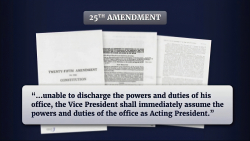
Congressman Nick Langworthy from Western New York recently introduced a bill that would deliver a huge win to his constituents. Debt-weary federal taxpayers will be relieved to learn that it costs nothing.
Langworthy’s Infrastructure Expansion Act of 2025, introduced in May, would effectively exempt federally funded construction projects from a costly New York State law. If he succeeds, the benefits of his bill will be felt across the Empire State.
Finally, a reason to check your email.
Sign up for our free newsletter today.
Construction projects in New York are unnecessarily costly in part because of Albany’s unique and extreme standard known as the Scaffold Law. It applies an “absolute liability” standard to employers and property owners for “gravity-related” injuries that occur on work sites, essentially requiring employers and property owners to prove that they had no responsibility for incidents. New York is the only state to apply such a high standard.
The rule originates from an 1885 provision of state labor law written to improve construction-worker safety as the first skyscrapers rose. But trial lawyers and judges took what began as a requirement for “proper protection” and stretched it over the next century. Today, the doctrine often requires judges and juries to overlook a worker’s own negligence.
The result has been predictable. Scaffold claims regularly lead to inflated settlements, even in extreme cases where a worker was intoxicated or disregarded safety rules. Those settlements, in turn, are passed on to other public and private projects in the form of higher insurance premiums.
That causes economy-wide problems. Scaffold and related liability insurance costs limit everything from how much housing cities can add—the Citizens Budget Commission in 2020 estimated that the Scaffold Law pushed up some housing construction costs by 7 percent—to how extensively Gotham can modernize or expand its subway system under the MTA’s latest capital plan. The problem has driven insurance carriers out of the New York market, leaving businesses with fewer options for coverage.
A decade ago, New York policymakers looked ready to confront the problem. A 2013 study by the Rockefeller Institute of Government, an arm of the state university system, estimated that the Scaffold Law alone added about $110 million annually to insurance costs in the Empire State. The authors noted that Illinois had repealed similar standards in 1995 and saw workplace safety improve.
Around the same time, the Port Authority of New York and New Jersey, which owns many of the major bridges around New York City, had unknowingly conducted a controlled experiment in insurance costs. The authority discovered that over the prior decade, the total amount of bodily injury claims was twice as high on the New York side of bridge construction projects compared with the Garden State side. Analysts pointed to the Scaffold Law as one of the culprits.
Albany came close to taking action in 2014, when the state Department of Financial Services under then-governor Andrew Cuomo asked insurers for details about their Scaffold Law experience. DFS inquired about how much the law added to insurers’ costs and about the “lack of predictability, increasing legal costs, regulatory environments, and uncompensated volatility.” But DFS shelved the findings, likely recognizing that a reform effort required confronting the Scaffold Law’s biggest defenders: New York trial lawyers, who at the time counted Assembly Speaker Sheldon Silver among their government patrons.
Silver was busted on federal bribery charges in 2015 and has been gone from public office for a decade; he died in 2022. But resistance to reform persists. Some of it stems from fearmongering by labor union brass, keen to defend “the Scaffold Safety Law.”
Even Albany’s Republicans, who otherwise lament “waste, fraud and abuse,” often shy away from questions about the Scaffold Law or the state’s tort climate in general. A 2024 study by the U.S. Chamber of Commerce estimated that a stunning 2.6 percent of the state’s GDP went to covering tort costs. The Scaffold Law is the poster child for overdue New York reforms.
Enter Langworthy’s bill, which would preclude state courts from applying absolute liability on any project “that receives federal financial assistance, benefits from federal tax incentives, or is subject to federal permitting requirements.” The bill would direct claims arising from such projects to federal court, where judges and juries would apply the more common standard of contributory negligence, essentially weighing the extent to which plaintiffs are responsible for their injuries.
This protection would make federal projects across the state economy—from transit improvements and bridge maintenance to flood mitigation and housing—more affordable. Ideally, the bill’s passage would shame New York into doing away with the Scaffold Law altogether.
Langworthy’s bill presents an overdue opportunity to save money for taxpayers—at the federal, state and local levels—and to kickstart a bigger conversation about liability costs that Albany has avoided. Maybe Washington can force the issue.
Photo by Soeren Stache/picture alliance via Getty Images
City Journal is a publication of the Manhattan Institute for Policy Research (MI), a leading free-market think tank. Are you interested in supporting the magazine? As a 501(c)(3) nonprofit, donations in support of MI and City Journal are fully tax-deductible as provided by law (EIN #13-2912529).
Source link
















